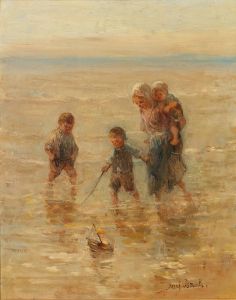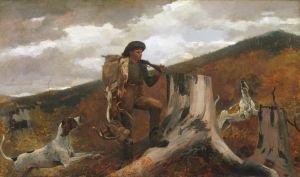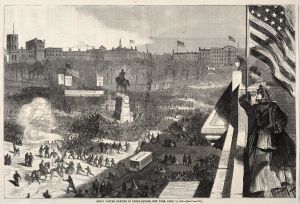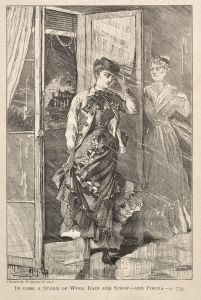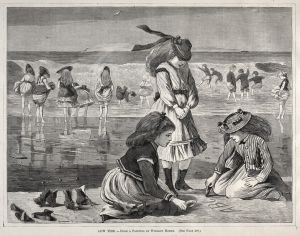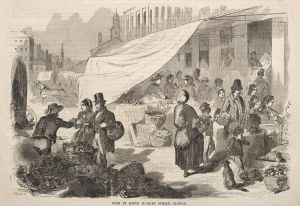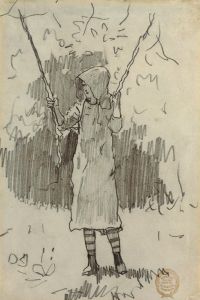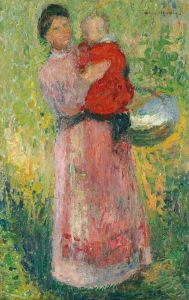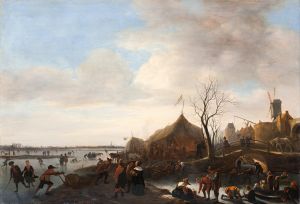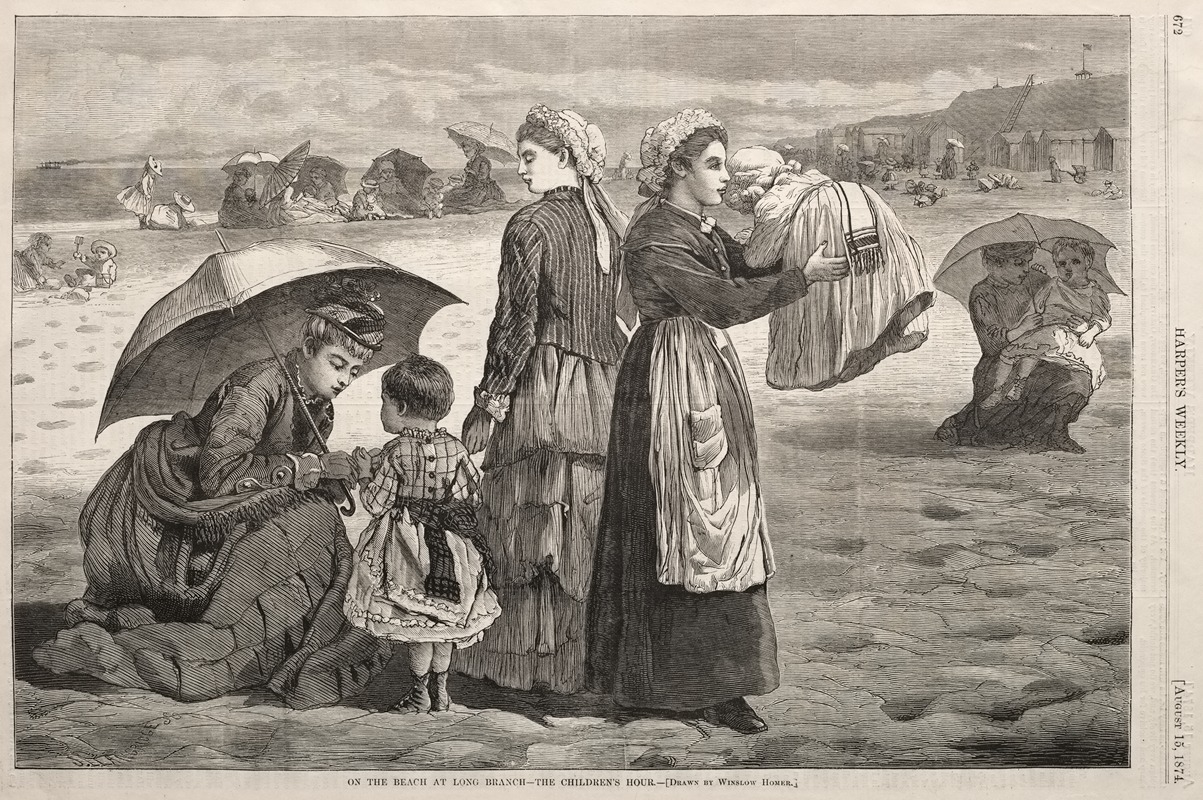
On the Beach at Long Branch – The Children’s Hour
A hand-painted replica of Winslow Homer’s masterpiece On the Beach at Long Branch – The Children’s Hour, meticulously crafted by professional artists to capture the true essence of the original. Each piece is created with museum-quality canvas and rare mineral pigments, carefully painted by experienced artists with delicate brushstrokes and rich, layered colors to perfectly recreate the texture of the original artwork. Unlike machine-printed reproductions, this hand-painted version brings the painting to life, infused with the artist’s emotions and skill in every stroke. Whether for personal collection or home decoration, it instantly elevates the artistic atmosphere of any space.
Winslow Homer, an influential American artist known for his landscape and marine subjects, painted "On the Beach at Long Branch – The Children’s Hour" in 1870. This work is a fine example of Homer’s early exploration of themes related to leisure and childhood, which he often depicted with a sense of realism and attention to detail.
The painting captures a serene scene at Long Branch, a popular seaside resort in New Jersey during the 19th century. Long Branch was a favored destination for many Americans seeking respite from urban life, and it attracted a diverse crowd, including families, which is reflected in Homer’s work. The painting portrays a group of children playing on the beach, a subject that aligns with the artist’s interest in the innocence and simplicity of childhood.
Homer’s choice of subject matter in "On the Beach at Long Branch – The Children’s Hour" reflects broader social changes in post-Civil War America, where there was a growing middle class with increased leisure time. The beach setting, with its open sky and expansive sea, conveys a sense of freedom and escape from the constraints of daily life. This theme of leisure was becoming increasingly popular in American art during this period, as artists sought to capture the changing dynamics of American society.
The composition of the painting is notable for its use of light and color, which are characteristic of Homer’s style. He employs a naturalistic palette that captures the bright, sunlit atmosphere of the beach. The children are depicted in various poses, engaged in play, which adds a dynamic quality to the scene. Homer’s attention to detail is evident in the way he renders the textures of the sand and the movement of the waves, creating a vivid and lifelike representation of the seaside environment.
"On the Beach at Long Branch – The Children’s Hour" is part of Homer’s broader body of work that often focused on the American experience, particularly the lives of ordinary people. His paintings from this period frequently explore themes of childhood, leisure, and the natural world, which would continue to be central to his artistic vision throughout his career.
Homer’s work during the 1870s, including this painting, helped establish him as one of the leading figures in American art. His ability to capture the essence of American life with authenticity and emotional depth resonated with audiences of his time and continues to be appreciated today. "On the Beach at Long Branch – The Children’s Hour" remains an important piece within Homer’s oeuvre, exemplifying his skill in portraying the interplay between humans and their environment.
The painting is housed in the Museum of Fine Arts, Boston, where it is part of a collection that showcases Homer’s significant contributions to American art. Through works like this, Winslow Homer has left a lasting legacy, offering insight into the cultural and social landscapes of 19th-century America.





